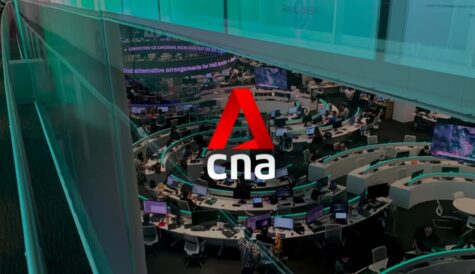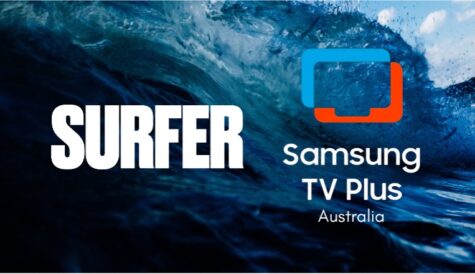
After more than 40 years of operation, DTVE is closing its doors and our website will no longer be updated daily. Thank you for all of your support.
Q&A: Dean Possenniskie, managing director, Europe, A+E Networks
 Dean Possenniskie, A+E Networks’ managing director for Europe, spoke to DTVE about growing audience reach, the importance of marketing and how to successfully extend existing channel brands.
Dean Possenniskie, A+E Networks’ managing director for Europe, spoke to DTVE about growing audience reach, the importance of marketing and how to successfully extend existing channel brands.
What are your strategic priorities?
2012 has seen the strongest year ever of audience growth across our local channel portfolios. History in particular has grown more than 50% year-on-year in prime time audiences across key western European markets such as the UK, Germany and Italy. Continuing to reach our growing audiences in new ways will remain a priority for our local channels in 2013 and we will continue to invest in new interactive and social media products in 2013. Local commissioning is key to the local positioning and success of our channels. In 2012 we produced more local hours than ever before in Europe across History, Crime & Investigation Network and Bio, and plan to do even more in 2013. Crime and Investigation Network has proven a ratings success in recent launches in Spain, Holland and Poland – we aim to launch the channel into new markets across EMEA in 2013. We have exciting new channel brands in Lifetime and H2 that we are working to launch in Europe in 2013.
Is the balance between free-to-air and pay TV revenues shifting?
Across Europe we are seeing positive growth in our core pay TV business. Pay penetration is growing, Germany has been a highlight as both DTH and cable subscriber numbers grow, while we see very strong growth in CEE markets such as Poland. We manage a complimentary free-to-air content distribution business alongside our pay channels and are seeing greater demand than ever for our programming.
Are you seeing much success from alternative revenue streams?
We operate successful local advertising businesses across key markets such as the UK, Spain, Germany and Italy. 2012 has seen the creation of local advertising windows on both History and Crime & Investigation in Poland and has already emerged into a significant revenue stream. We have an active home entertainment distribution business in Europe with direct partnerships and licensing deals in place throughout the region.
How are A+E Networks’ brand values communicated?
We work hand-in-hand with the marketing, on-air, digital and programming teams from our joint ventures and licensing partners to ensure that locally produced trade and consumer materials appeal to local tastes and cultures, while adhering to the brand proposition. We firmly believe that nothing beats face-to-face communication, so representatives from our corporate office in New York travel frequently to meet with the local teams, and the local teams send reps to New York to meet with their US counterparts. We also hold a yearly conference with representatives from our channels around the world to talk about what’s new for the brands, share success stories and exchange ideas.
What marketing efforts have you undertaken with local partners?
It is critical for programming providers to utilise their brands and content to help drive value for the pay TV platform. Our expertise is connecting with consumers through compelling content, and by utilising this connection to help our partners sell their products and services, we derive mutually beneficial results for our businesses. We’ve done this successfully in a number of markets. In the UK, BSkyB utilised The Kennedys to help drive subscriptions to the pay environment by targeting viewers on the free-to-air platform. This show delivered History UK’s highest ever audience. A+E Networks UK partnered with Ziggo to announce the launch of Crime & Investigation in the market. Ziggo utilised the launch to drive awareness of the package and increase subscriptions. They promoted it internally through their call centres and staff trainings and externally through their retail stores and platform promotional inventory.
What are the risks of developing spin-off versions of core channel brands?
The biggest risk to developing a spin-off version of a core brand is for the new brand to be viewed as a ‘lite’ version of the original, and that you water down your core brand if the spin-off voice is not distinct. But it can work. As History has catapulted into one of the leading pay TV brands in the US, we saw some opportunities in the landscape that we could leverage. We transitioned our History International (HI) brand to H2 last year, and we built off the success of HI with an increased investment in original programmes that allow viewers to immerse themselves more deeply into topics they enjoy on History. The strategy worked from go. We did not see a drop in viewership from History. In fact the channel has continued its growth streak, while H2 has built upon the HI audience significantly and has climbed the charts. Both brands are stronger than ever.
How are plans to launch Lifetime internationally developing?
Our strategy is to launch Lifetime in all markets worldwide. We had our first international launch for the brand in Canada in August. We are in active discussions with partners worldwide to launch the channel and expect to make more announcements later this year.
When does it make sense to localise programming?
A channel brand such as History can present strong local stories, heritage and characters, which we have invested in more heavily than ever in 2012. It’s important that we have strong distribution in a market backed by a talented local team as we have done in markets such as the UK, Germany and Spain.


